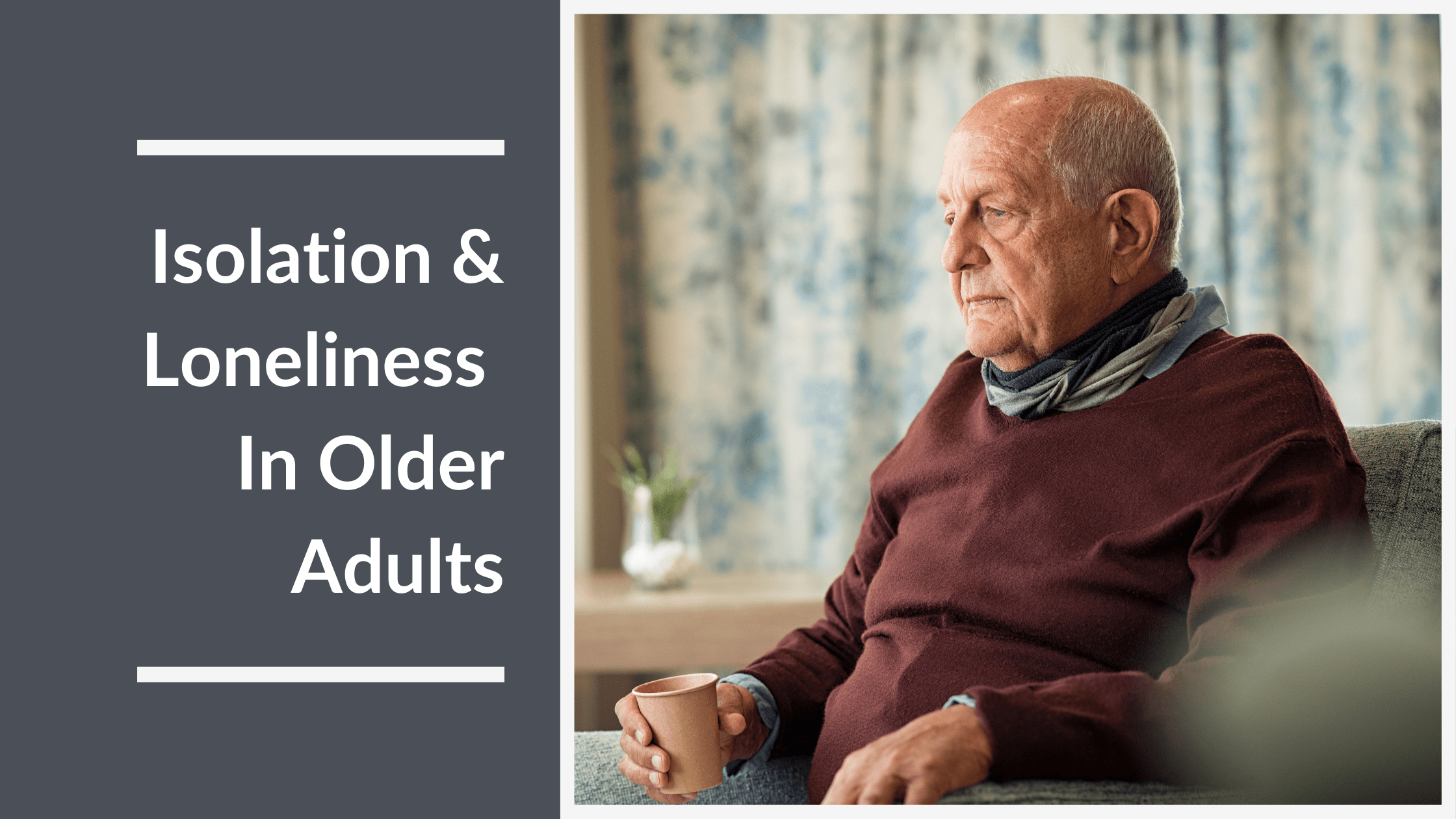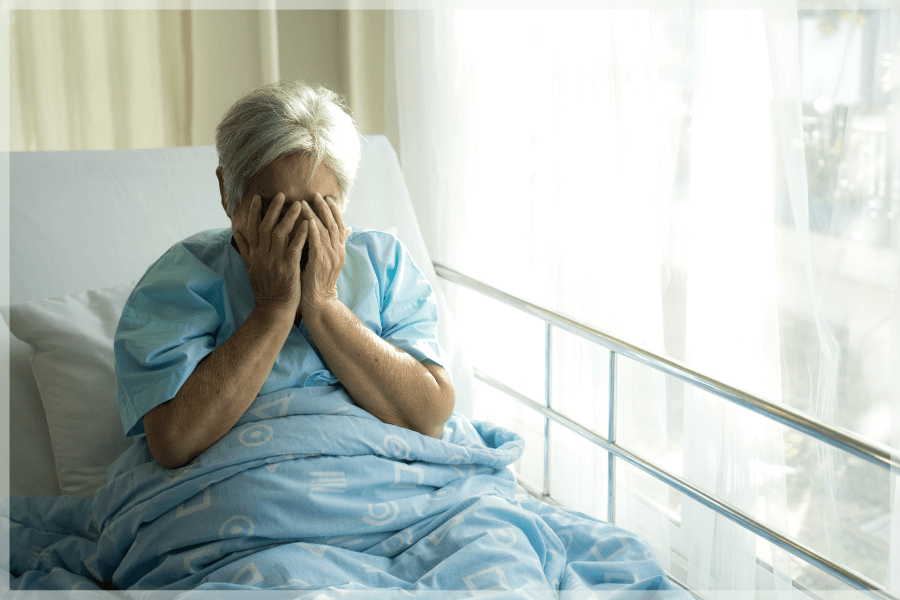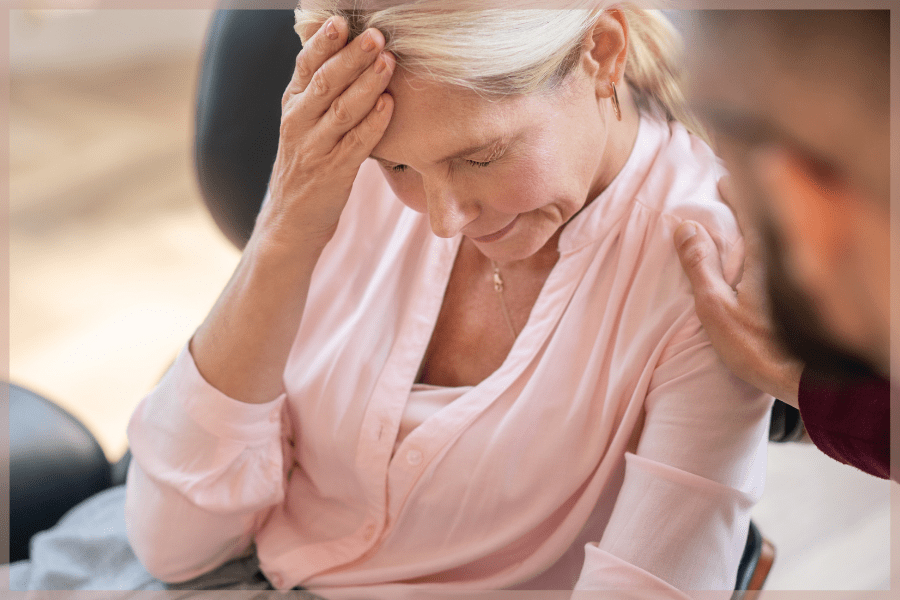
Senior social isolation is a growing problem within a rapidly aging population. Learn the signs and how you can help your loved one today.
Updated February 23, 2022
Senior Social Isolation: A Growing Problem Among Older Adults
Senior social isolation is nothing new. Think about the many movies, TV shows, or books that feature the cranky older character stereotype. Usually, this person (sometimes portrayed as the story’s antagonist) refuses to let anyone on their property, inside their home, or seldom leaves their house. Carl Fredrickson from the movie “Up” is a prime example of this stereotype, which the media often uses as a lighthearted, laughable foil for the protagonists in the story.
However, isolation and loneliness in seniors are serious problems that don’t only affect suffering individuals. And as the rate of senior social isolation rises, experts caution about the widespread consequences for communities, health care systems, and even the federal government.
Senior social isolation can be voluntary or involuntary, and getting at-risk seniors the help they need is challenging. For this reason, learning the signs and effects of social isolation on the elderly is vital. So if you believe your loved one is at risk, this article can help.
Senior Social Isolation Statistics At A Glance
- One-fourth of adults over 65 are socially isolated.
- Nearly 28% of older adults (or 13.8 million people) live alone.
- Extreme cases of isolation cost Medicare almost $130 more per month.
- About $6.7 billion in yearly federal spending is linked to senior social isolation.
- Socially isolated seniors are more likely to fall victim to elder abuse & neglect.
- Social isolation can be as harmful to health as smoking 15 cigarettes daily.
- Lonely older adults are 60% more likely to believe their quality of life will diminish within the decade.
Senior Social Isolation Vs. Loneliness
Many people use isolation and loneliness interchangeably, but experts studying this problem note that they are different. For example, loneliness correlates to the individual’s personal feelings or state of mind. Loneliness can occur when the quantity or quality of social interactions doesn’t match the person’s wants.
It’s not uncommon for people to feel lonely even when around others. But if they’re at risk of social isolation, they may feel even more lonely, even with a robust support system. According to the National Seniors Council of Canada, senior social isolation is characterized by the following:
- Low-quality or infrequent contact
- Few social interactions or roles
- An absence of mutually-beneficial relationships.

Risk Factors For Social Isolation
Senior social isolation can happen to anyone, no matter how active they have been in the past. However, some seniors are more vulnerable than others. So if you are worried about someone you know, look for these risk factors of senior social isolation:
- Poverty
- Living alone
- Low self-esteem
- Poor health or chronic conditions
- Weak or nonexistent emotional support systems
- Diminished interest in physical and leisure activities
- Diminished sense of comfort living in their neighborhood
- Limited interactions with friends, family, and other social groups
- Living in urban areas, especially those with limited public transportation
- Little or no support with activities of daily living, shopping, or transportation.
"From our research and discussions, it is becoming increasingly clear that loneliness in older adults places stress on their health, along with the clinical and social infrastructure needed to support them."
IBM Institute for Business Value
The Effects Of Senior Social Isolation
As mentioned earlier, senior social isolation doesn’t just affect one individual. It also impacts families and communities. So if you know someone who struggles with loneliness or isolation, it’s crucial to find them the help they need sooner rather than later.
Moreover, the effects of social isolation can be lifelong and make it more challenging to maintain or find new relationships. Unfortunately, this creates a cyclical pattern that can devastate seniors’ quality of life.
Lower Health Outcomes
Studies show that some effects of social isolation rival smoking, obesity, and high blood pressure. In addition, it can have several negative consequences, such as:
- 50% higher risk of dementia
- 29% higher risk of heart disease
- Four times higher mortality among heart patients
- 68% higher rate of hospitalization for heart patients
- 57% higher rate of ER visits
- Higher rates of depression and suicide.
More Stress For Family Caregivers
Senior social isolation means added strain and responsibilities for many family caregivers. According to a 2015 National Alliance for Caregiving and AARP Public Policy Institute study, 56% of caregivers said their role impacted their careers. Meanwhile, 22% caring for an isolated loved one noted worsened health. These factors can reduce family caregivers’ income, leading to financial insecurity and creating additional pressures that further interfere with personal responsibilities and their capacity to care for their loved ones.
Higher Costs For Health Systems
Treatment for adverse health outcomes stemming from chronic loneliness in seniors is costly and increases overall health expenses. Or, in some cases, lonely seniors make frequent doctor’s visits — not to seek treatment for a condition but to have social interaction. This issue stresses already strained healthcare systems more by diverting critical resources from other patients’ needs.
According to a 2017 AARP Public Policy Institute study, Medicare “spent an estimated $134 more monthly ($1,608 annually) for each socially isolated older adult” compared to their socially-connected counterparts. In addition, isolated Medicare recipients were 29% more likely to spend more on skilled nursing facility (SNF) care. According to the study, Medicare spent an average of $75 more each month on SNF care and $81 extra for inpatient services.
Weaker Communities
The hidden costs of senior social isolation have detrimental social and economic effects. For example, as more workers become family caregivers, businesses will see decreased “morale, productivity, and costs.”
Furthermore, as employees leave the workforce to focus on caregiving, the loss of experienced talent will make it difficult for companies to operate at previous levels. Businesses that fail to address the needs of working caregivers may struggle to keep their doors open. In turn, shuttered businesses will negatively impact the community’s local economy.
The community impact extends beyond economics, however. According to a 2013 study, seniors provide many volunteer hours to community groups. Similarly, they often assume leadership roles within their communities. This contribution is significant in rural communities, which struggle to fill “vacancies left by young adults who move to urban areas in search of better opportunities.“
But unfortunately, when older adults suffer from loneliness and isolation, they are less likely to participate in civic engagement. In turn, community organizations may struggle to serve their communities effectively while exasperating the need for local leadership.
Social Isolation Among Caregivers

Senior social isolation is a troubling problem, but it isn’t only the elderly at risk. Whether or not they realize it, family caregivers can also become isolated, complicating existing issues and making care difficult.
Most caregivers work alone, and about 53% have little to no time for friends or family because of their duties. And many prioritize the care of their loved ones over their social well-being. Consequently, they also exercise less and maintain a more deficient diet.
Taking care of your health and general well-being may be difficult, especially for those who frequently experience guilt for taking time for themselves rather than performing other duties. However, neglecting yourself can lead to caregiver burnout and social isolation.
70% of caregivers are clinically depressed. So if you think your responsibilities might be getting the best of you, take a moment to take time for yourself. You may not need a full-time caregiver, but even a part-time professional will allow you to breathe for a moment or take a respite break.
6 Ways To Help Ease Senior Social Isolation
While this problem can be tricky, it’s not impossible. Here are a few things you can do to help someone you believe may be at risk for senior social isolation:
Help Them Find Rides
A lack of transportation can significantly increase isolation and loneliness. Without a ride, your loved one may feel dependent on others, negatively hurting their self-esteem and limiting their ability to stay social.
As a family caregiver, you want to help your loved ones as much as possible, but you can’t always be there for them when they need a ride. Consider calling your local community or senior center and finding volunteers to help. Alternatively, an in-home care professional can provide transportation and ensure your loved one gets out of the house more.
Support Healthy Choices
Health problems such as eyesight and hearing loss can make older adults reluctant to leave home. Similarly, incontinence can significantly affect your loved one’s social withdrawal. Therefore, frequently check with your loved one and find treatment as needed. Also, ensure they eat right and exercise regularly, as these will help improve mood and relieve depression.
Build Their Confidence
Everyone struggles with body image issues, and seniors are no exception. Compliments go a long way to help your loved one feel confident. Discourage negative self-talk and fretting when you hear it, and reinforce it with kind words.
Renew Their Purpose
Many seniors (especially women) may feel a lack of purpose without something for which to care. Encourage your loved one to adopt a companion animal like a dog if their health allows it. If they aren’t a pet person, starting a new hobby such as gardening, volunteering, or painting will improve their well-being.
Show Affection
People who have limited physical contact with others may experience loneliness the most. So, show affection to your relative when you visit them. Even if touching isn’t in either of your natures, just one embrace can help.
Join Age-Friendly Communities
Age-friendly communities are great for senior engagement, and Massachusetts has many throughout the state. The Massachusetts Healthy Aging Collaborative, Boston AARP, and the Age-Friendly Boston Project have many resources to help you find adult day care and senior communities.
MeetCaregivers Can Help
The stereotype of the grumpy elder might cause many to think that senior social isolation is just another part of aging. But the reality is that it is a troublesome, challenging, and sometimes debilitating problem for the individual and their families.
So, take the time to identify the signs and get your loved ones the help they need. It will improve their quality of life and make their golden years the best they can be.
MeetCaregivers works with you and your loved one to help you find the perfect caregiver based on their needs, personality, interests, and more. In addition to our care, transportation, and meal delivery services, we can provide companionship when you are unavailable.
For more information, contact us at 1 (888) 541–1136 or Find A Caregiver today. And if you want to find additional resources, visit our Blog.
- AARP. (n.d.). 2 Tools To Overcome Social Isolation. Connect2Affect. Retrieved May 14, 2019, from https://connect2affect.org/
- Anderson, J. (2016, March 21). 14 Ways to Help Seniors Avoid Social Isolation. A Place for Mom. Retrieved May 14, 2019, from https://www.aplaceformom.com/caregiver-resources/articles/help-seniors-avoid-social-isolation
- Bay Alarm Medical. (2017, October 2). 6 Powerful Ways To Help Seniors Avoid Isolation. Bay Alarm Medical. Retrieved May 14, 2019, from https://www.bayalarmmedical.com/medical-alert-blog/6-powerful-ways-help-seniors-avoid-isolation/
- Palmarini, N., & Fraser, H. (2020). Loneliness and aging: Navigating how business and government can address an enduring crisis. IBM Research Insights. Retrieved March 8, 2022, from https://www.ibm.com/downloads/cas/RZO0JVMN
